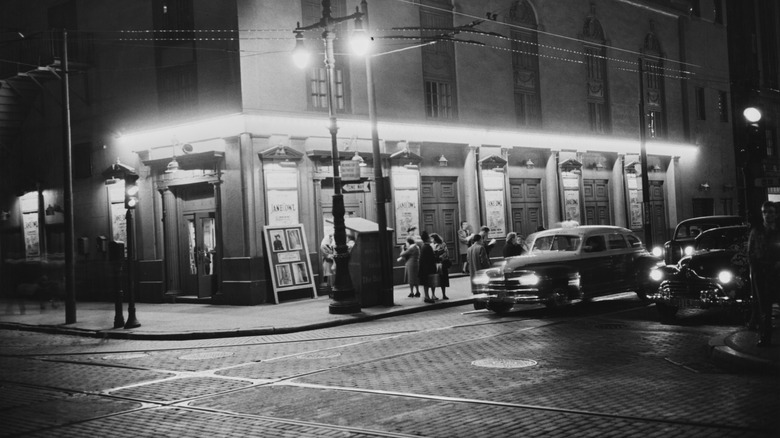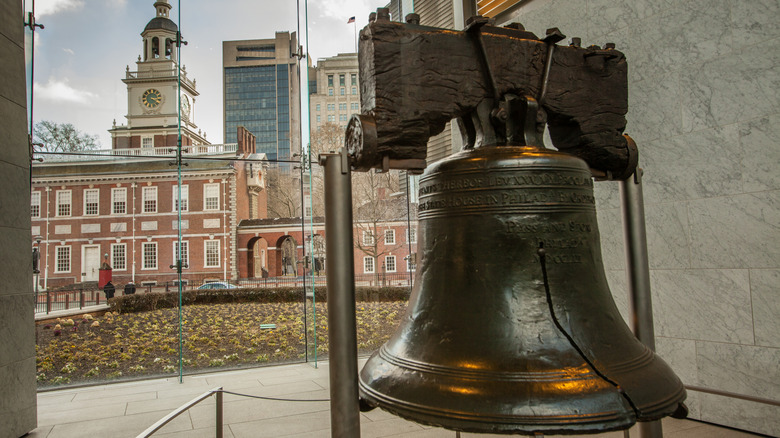America's Oldest Continuously Operating Theatre Offers Timeless Performances In Pennsylvania
One of the great things about visiting East Coast states is that each one has a rich history for you to explore. Philadelphia, in particular, is a fantastic city if you want to learn more about America's early days, from the founding of the country to modern times. In fact, there's one place where you can experience over 200 years of history: The Walnut Street Theatre. Also known as "America's oldest theater," the Walnut has been around since 1809, delighting audiences of all ages.
Although this venue isn't usually considered one of the many things you can't skip on a trip to Philadelphia, its historical and cultural impact can't be overstated. The theatre has welcomed presidents, celebrities, and various luminaries throughout the past two centuries. As the rest of the city changed with the times, the Walnut remained steadfast (although it has been renovated and updated over the decades).
Whether you're a history buff or just love old buildings, the Walnut Street Theatre is a must-see attraction. Plus, given that Philadelphia is America's most walkable city, it's easy to incorporate the theater into the rest of your itinerary.
The history behind the Walnut Street Theatre
With more than 200 years of shows and events, there's far too much history to cover here. In fact, you could write an entire encyclopedia about the stories behind the Walnut Street Theatre. But let's start at the beginning, in 1809. At that time, equestrian shows were the standard draw, with horses and riders circling a dirt track surrounded by viewers. However, by 1812, an 80-foot dome was added (the tallest structure in Philly at the time), and horses were replaced by a standard stage. The first show on the new stage was The Rivals, and none other than President Thomas Jefferson and the Marquis de Lafayette were in attendance on opening night.
Speaking of presidents, the Walnut found itself in the midst of a political scandal after the Civil War. Oddly enough, Edwin Booth, the brother of the infamous John Wilkes Booth, had purchased the theatre in 1863. After Lincoln's assassination, public sentiment soured on the Booth family (which had been one of the most prominent acting families at the time). Fortunately, while those sentiments led to low approval of the Walnut, the establishment bounced back.
Because it's been around for so long and has had such a high profile, the Walnut Street Theatre has been innovating since its inception, having been the first to include gas footlights for guests to see (installed in 1837), air conditioning (installed in 1855), and the curtain call. It's also one of the few remaining theatres in the U.S. that still uses its original rope and pulley system, complete with a hand-painted fire curtain depicting the 1753 painting, The Liberty Bell's First Note.
How to incorporate the Walnut Street Theatre into a Philadelphia trip
Fortunately, the Walnut Street Theatre is in the heart of the city, so it's not hard to add to any Philly travel itinerary. In fact, it's only a few blocks away from the artsy, trendy melting pot of cultures that is South Street, and it's also pretty close to the Liberty Bell (according to Google Maps).
The best way to experience the theatre is to catch a show. Although it is old, it's just as vibrant as ever, showing big productions like (as of early 2025) "Driving Miss Daisy," "Hay Fever," and "Dreamgirls." You can also book a backstage tour and learn more about the various actors, playwrights, and celebrities that helped bring the Walnut to life over the decades. However, tour dates are limited, and there are only 30 spots available on each tour, so you must book as early as possible.
If you're a history buff, you can take a self-guided walking tour of spots around the Walnut. In addition to the Liberty Bell, there's Independence Hall (where the Declaration of Independence was signed), Carpenter's Hall (which held the first Continental Congress), and the Museum of the American Revolution. All of these sites and more are just blocks from the Walnut, making it super easy to experience American history in person.


